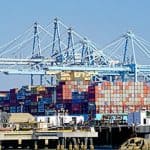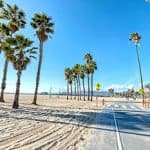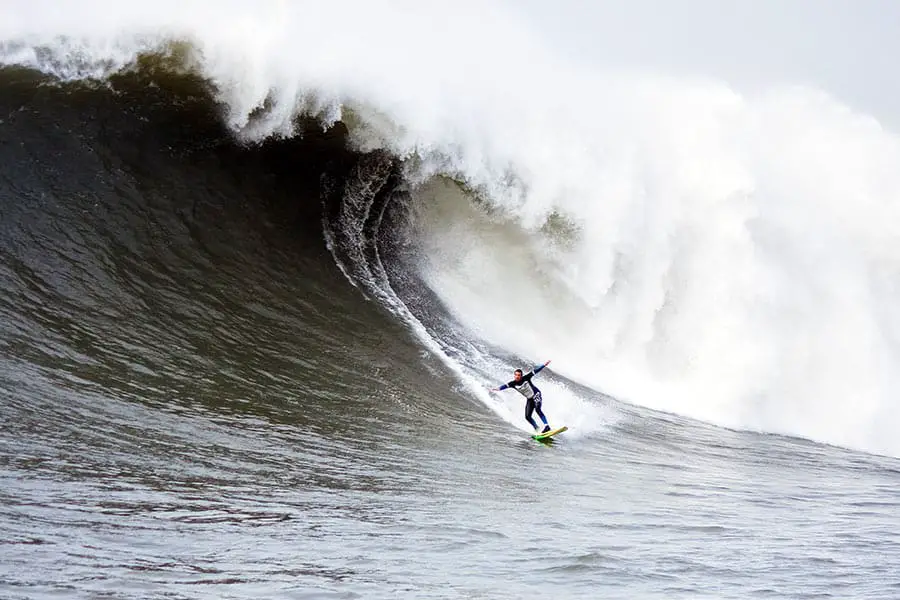
The California coast is home to almost every kind of wave imaginable. There are rights, lefts, closeouts, barrels, point breaks, beach breaks, wedges, and a-frames, to name a few. Beaches with great surfing are plentiful in the Golden State, so what makes Mavericks Beach in Northern California so famous?
Mavericks Beach is famous for having the most powerful wave in California. The waves impact the sea floor with such power that they register on the Richter scale. Also, Mavericks is legendary for its sheer size and the fact that the building-sized waves are clean and rideable for experienced surfers.
Whether you are considering a visit to Mavericks or are curious what it’s all about, the following sections describe the history and significance of this wave and the best time of the year to witness its power.
Mavericks – California’s Most Famous Wave
Mavericks Beach is in San Mateo County in California, around 25 miles from San Francisco. It is a narrow strip of sand that sits at the bottom of Pillar Point near Half Moon Bay. However, Mavericks beach isn’t why people often visit this part of the Northern California coast during the foggy, cold, and drizzly season; they come to experience firsthand the power of the largest and most famous wave in California.
The secluded towns around Half Moon Bay fill with surfers and visitors from around the world once Mavericks starts to break. People can watch the mountainous waves that break off the coast of Pillar Point—waves that boom as they crash, that seem to rise out of nowhere, that move tons of water heavenward, reminding both surfers and spectators how powerful the ocean is.
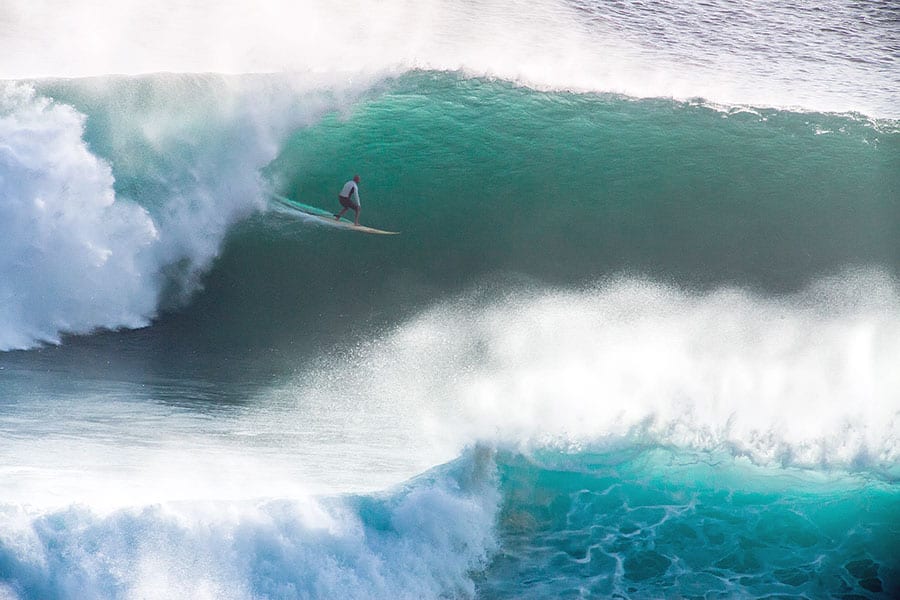
Mavericks lures surfers from around the world, captivates all who see it, and once almost took Gerard Butler’s life while he was shooting a scene for the movie Chasing Mavericks. Mavericks has a rich history and is a unique destination for a vacation or day trip.
In the past, there was an invitational contest at Mavericks. Surfers would have around 24 hours to get to the wave for the contest to potentially get the green light. The competition only ran if the waves were massive and clean. Currently, there is no official contest held on a specific day. However, video submissions are accepted for the Mavericks Surf Awards with cash prizes available to the women and men with the winning submissions.
Mavericks Role in California Surf History
Mavericks was discovered by a few local surfers at Half Moon Bay in 1967. These surfers paddled out to surf smaller waves since they thought the waves breaking further out were too dangerous. They left their dog, a German Shepherd, on the beach, but he quickly swam out to meet them. They quickly helped him back to shore since the waves were too dangerous.
Their dog’s name was Maverick, and they decided to name the wave after him since he seemed to be excited about the place. Though these surfers discovered the outer break in 1967, it wasn’t until 1975 that an 18-year-old carpenter, Jeff Clark, decided to paddle out to surf the big, outside waves.
Jeff Clark surfed Mavericks by himself for years. He tried to convince people that the wave existed and was surfable, but no one believed him until years later. So instead of arguing his point, Clark surfed. He began going left at Mavericks and then learned to surf the right.
Over the years, he became a master of the wave; today, he is considered one of the pioneers of Mavericks. At a time when many California surfers traveled thousands of miles to Hawaii to surf big waves, Clark found a wave of similar size and power in his own backyard. Once Jeff convinced a few other surfers to paddle out with him, the news of Mavericks quickly spread, and California was suddenly on the map for big wave surfing.
One of the best places to learn more about the wave is at the Mavericks Surf Company, located in the town of Half Moon Bay. Started by Jeff Clark himself, here you can find exclusive gear and surfboards that are shaped by Jeff Clark and sold only at this shop. In addition, this shop is a great place to learn more about the history of Mavericks. You might even bump into the original Pioneer of Mavericks, Jeff Clark.
Bay Area Answers Fun Fact: The biggest wave on record is a whopping 1,720 feet at Lituya Bay, Alaska. An earthquake caused the massive wave on July 9, 1958.
Other Posts of Interest
- Is Point Reyes National Seashore Worth Visiting?
- Where Are The Farallon Islands?
- Can You Tour the Winchester House?
- What Is The Presidio In San Francisco?
Why Are The Waves So Big at Mavericks?
The mechanics of Mavericks is like many other big waves around the world. The ocean floor rises quickly, and the energy from the ocean only has one way to go: up. But what makes Mavericks unique is the geography of the sea floor.
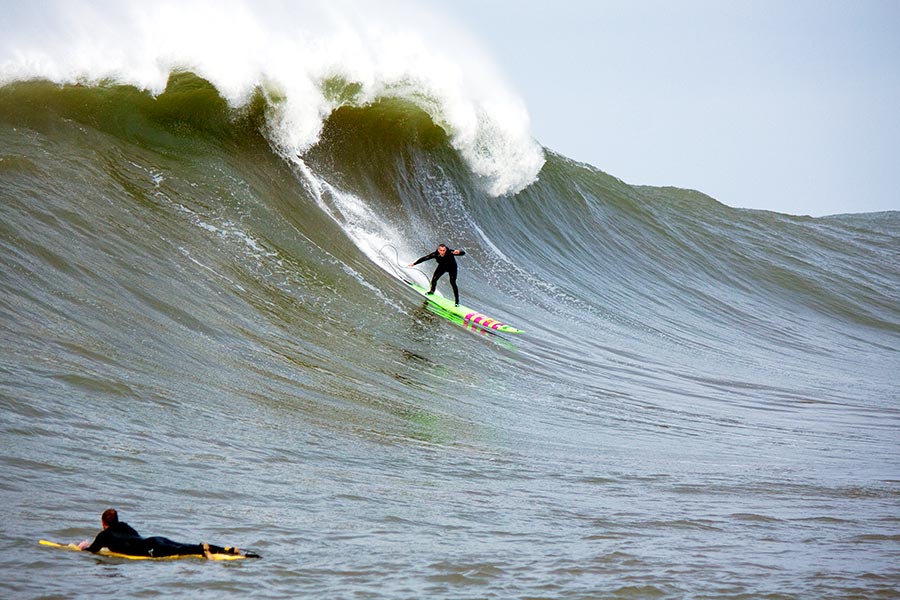
Mavericks has a shallower reef where the wave breaks, and on either side, there are two deep channels. As the swell comes in after a storm, the energy moves up the channels forcing a bigger wave on the shallow, middle section of the reef. Soon after the wave rises, the ocean folds over itself before crashing into an explosion of whitewash, and the wave creates a barrel large enough to drive a bus through.
With a side view of the wave, it’s possible to see through the tunnel of water from one side of Mavericks to the other before an explosion of whitewater steals the scene. For a few moments, surfers frequently catch the barrel before the wave heaves and spits out a mist of saltwater. The bigger the waves, the more rewarding (and dangerous) they are for surfers.
How Big Do the Waves Get at Mavericks?
While other waves in California can’t handle the size of a large swell, Mavericks comes alive and thrives with big swells. Storms that start in the Pacific, sometimes as far away as Japan and Alaska, push energy toward the California coast. In order for Mavericks to start producing rideable waves, the storm must come in from the ideal angle (west or northwest), so the energy will match up with the channels in the sea floor. Then, a few days after the initial storm, Mavericks wakes as swell begins to reach the coast.
The smallest wave that breaks at Mavericks is around 10 feet tall, but it’s not until the wave hits 15 feet that it begins to take its true shape. When Mavericks begins breaking, 20–30-foot waves are not uncommon. Sometimes Mavericks goes XXL, producing waves upwards of 60 feet. Not only are these waves tall, but they are also thick, which makes them both powerful and dangerous.
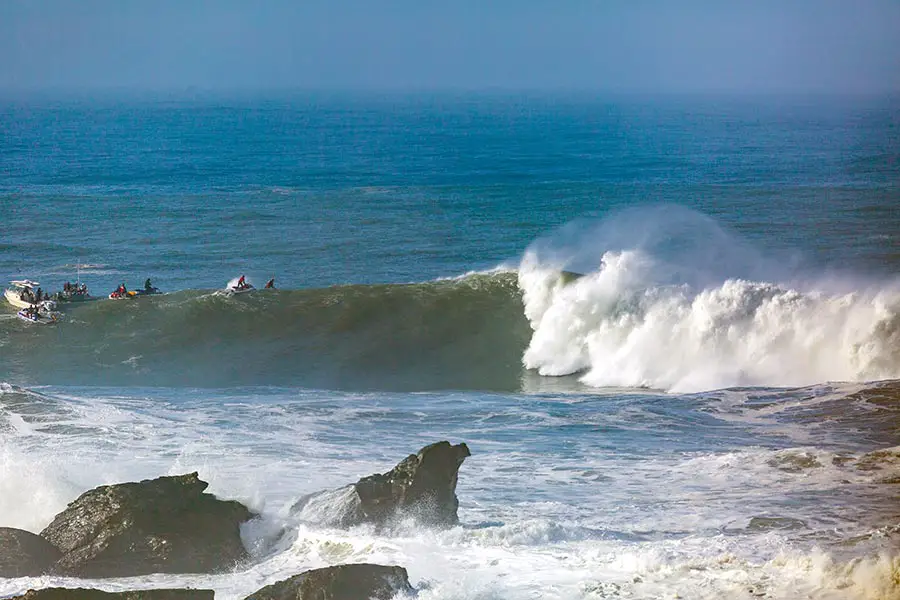
What are the Best Months for Waves at Mavericks?
In the summer, Mavericks doesn’t break. Instead, you will find calm, inviting water for the most part during the warmer months. Mavericks receives its biggest swells from October to April, with January usually being the best overall month.
During these months, storms in the Pacific push energy toward the California coast. Since the bigger swells are in the colder months, surfers must wear thick, hooded wetsuits, gloves, and booties. Even with all that gear, it is still easy to get so bone chilled that it becomes difficult to move quickly.
Not only do surfers have to possess the stamina to paddle half a mile to get to the wave, but they also need the confidence to drop into a 20+ foot wave and composure to stay calm if something goes wrong. Hold downs are common at Mavericks, which is why many big wave surfers train to hold their breath for minutes at a time.
Only experienced big wave riders should attempt to catch waves at Mavericks. But the California coast has plenty of waves if you are looking for a wave that will match your skill level. Even though Mavericks is not a wave for novice surfers, it can be exhilarating to watch the surfers. If you watch from shore or from the bluff, a pair of binoculars will help you feel closer to the action.

Has Anyone Died Surfing Mavericks?
Mavericks produces pristine and powerful waves, but sadly Mavericks has also claimed two lives. In 1994, Mavericks claimed the life of Mark Foo, an experienced Hawaiian big wave surfer. Foo passed away after falling, breaking his board, and being held under by the waves.
In 2011, Mavericks took another life, Hawaiian surfer Sion Milosky. Sion had been surfing for a few days, making critical drops, and surfing beautiful waves. He made the drop on a larger wave, and then it crashed behind him, knocking him into the water and holding him under. Sion was known as an ambitious and daring surfer who caught what is thought to be the biggest wave ever paddled into.
Living History
Mavericks has been a proving ground for great surfers since it was first ridden. The town of Half Moon Bay is filled with history that continues to develop with each massive swell that hits Mavericks.
Experiencing this rugged part of California’s coast is an opportunity to witness a part of California’s history. This part of California has much to enjoy and discover, from monstrous waves to relaxing spas, all while being about 25 miles from the San Francisco Bay Area.


